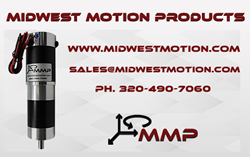HL Holdings's HL Robotics Acquires "Stanley Robotics"
With the world's first company that "commercialized outdoor valet parking robots," HL Robotics advances to take the lead in the global market
HL Robotics, a subsidiary of HL Holdings established on September 6, signed an agreement to acquire "Stanley Robotics," the world's first company to commercialize outdoor valet parking robots. The acquisition is expected to be finalized before the end of the year and following the agreement from the authorities. HL Robotics' swift action has garnered attention and is expected to capture a market worth USD 6.7 billion. The key is on "popularization," the core is "autonomous driving technology," the challenge is "global expansion," and Stanley Robotics is an automated valet parking robot company that fulfills all these criteria. With this acquisition, HL Robotics aims to "take the lead in the global parking robot market" and spearhead the advancement of global autonomous parking robot technology, positioning it as a new growth engine for HL Group.
Stanley Robotics specializes in the commercialization of automated parking robots. After successfully commercializing parking robots in Lyon-Saint-Exupéry Airport in France in 2018, Stanley Robotics signed a parking robot subscription agreement with a Canadian finished vehicle logistics supply chain company, launching robotic automotive logistics compound management in September this year. This marks the first commercial model in North America featuring a comprehensive package, including maintenance services. Also, expectations for additional orders are high, with concentrated spots for vehicles, including railroad logistics companies and airports across North America and Europe, as potential customers. There is considerable excitement surrounding Stanley Robotics' flagship product, "Stan." Stan is an autonomous valet parking robot that navigates parking lots without time or space constraints, making it a key player in the commercialization of parking robots. This success has been enabled by the Fleet Management System(FMS). The FMS, which utilizes digital twin technology, not only monitors Stan but also provides real-time remote control from one central location. Market concerns about potential "power-off" issues have been addressed by Stan's built-in "intelligent automatic charging function" as the solution.
The market for autonomous parking robots is wide open. Experts predict that the global market, which has been growing at double-digit rates annually, will reach USD 6.7 billion by 2030. This growth is driven by space shortages, population growth, and increasing urban density in major cities worldwide. These factors have led HL Group to invest in the global autonomous parking robot business. HL plans to expand its business portfolio beyond parking robots to include a broader range of robotic solutions aimed at everyday consumers.
About HL Robotics
HL Robotics, a newly formed subsidiary of HL Holdings, aims to "take the lead in the global parking robot market" and spearhead the advancement of global autonomous parking robot technology, positioning it as a new growth engine for HL Group. Backed by HL Group's extensive global presence and deep industry experience, HL Robotics is driving forward the future of automation in the parking and logistics sectors.
Featured Product

